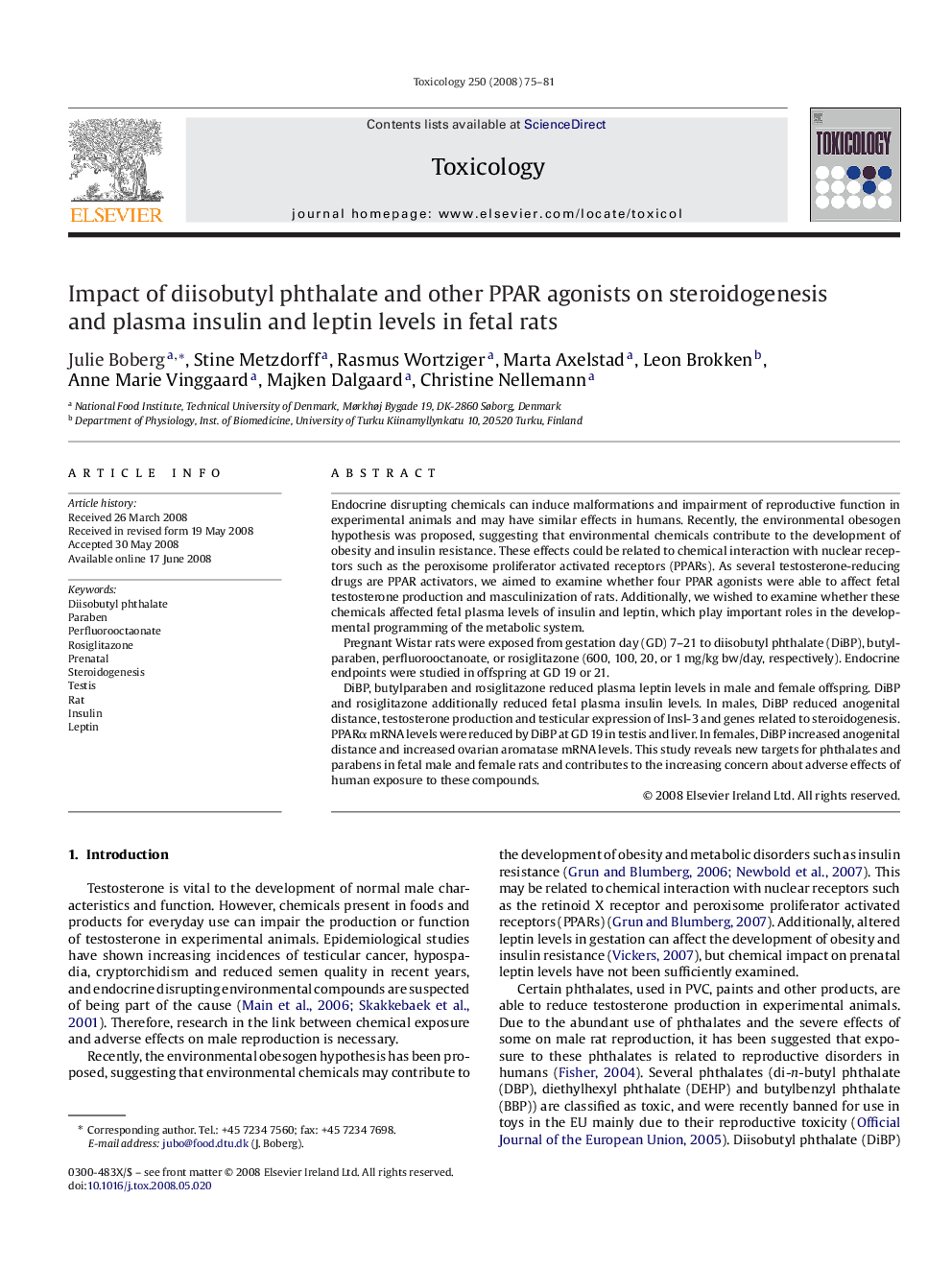| Article ID | Journal | Published Year | Pages | File Type |
|---|---|---|---|---|
| 2597172 | Toxicology | 2008 | 7 Pages |
Endocrine disrupting chemicals can induce malformations and impairment of reproductive function in experimental animals and may have similar effects in humans. Recently, the environmental obesogen hypothesis was proposed, suggesting that environmental chemicals contribute to the development of obesity and insulin resistance. These effects could be related to chemical interaction with nuclear receptors such as the peroxisome proliferator activated receptors (PPARs). As several testosterone-reducing drugs are PPAR activators, we aimed to examine whether four PPAR agonists were able to affect fetal testosterone production and masculinization of rats. Additionally, we wished to examine whether these chemicals affected fetal plasma levels of insulin and leptin, which play important roles in the developmental programming of the metabolic system.Pregnant Wistar rats were exposed from gestation day (GD) 7–21 to diisobutyl phthalate (DiBP), butylparaben, perfluorooctanoate, or rosiglitazone (600, 100, 20, or 1 mg/kg bw/day, respectively). Endocrine endpoints were studied in offspring at GD 19 or 21.DiBP, butylparaben and rosiglitazone reduced plasma leptin levels in male and female offspring. DiBP and rosiglitazone additionally reduced fetal plasma insulin levels. In males, DiBP reduced anogenital distance, testosterone production and testicular expression of Insl-3 and genes related to steroidogenesis. PPARα mRNA levels were reduced by DiBP at GD 19 in testis and liver. In females, DiBP increased anogenital distance and increased ovarian aromatase mRNA levels. This study reveals new targets for phthalates and parabens in fetal male and female rats and contributes to the increasing concern about adverse effects of human exposure to these compounds.
